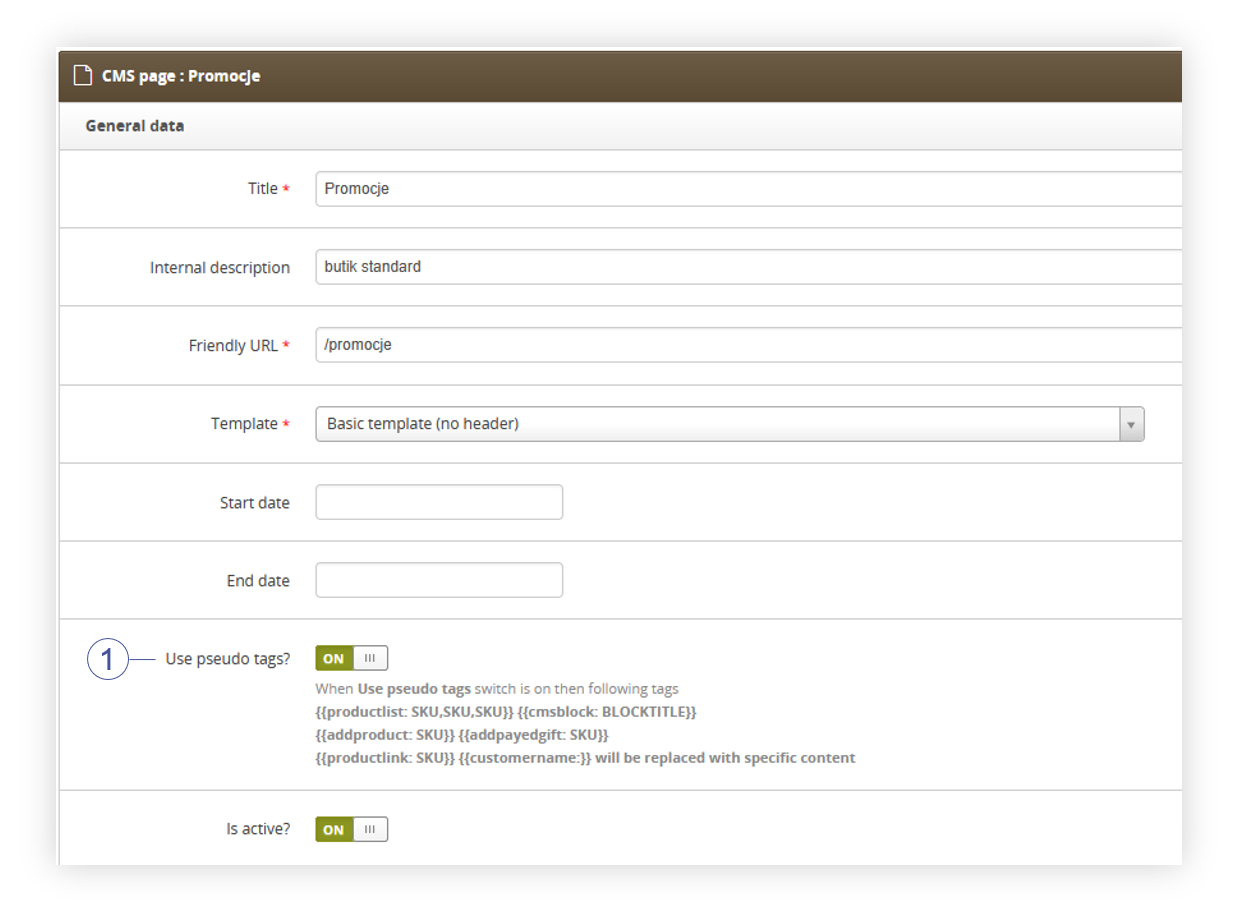Pseudo tags
 Getting started
Getting started
This article describes the pseudotag system that is used by the CMS blocks and CMS pages to dynamically display content in them.
 |
| Visualization of the example usage of a pseudotag |
For pseudo tags to work, they need to be enabled in the selected CMS block or page by turning on the Use pseudo tags? button (1). When this button is turned off the pseudo tags won't be converted into dynamic content.
 |
| Visualization of the use pseudo tags? button. |
Table of contents:
 Available pseudo tags
Available pseudo tags
Pseudo tag is defined by name and parameters of the pseudo tag in double curly braces "{{ }}". The pseudo tag is defined in the following order: {{PseudoTag: SKU,SKU,SKU argument:true}}
| Name | Available arguments |
| cmsblock | Title of a CMS block |
| addpayedgift | SKU number of a product |
| addproduct | |
| productlink | |
| productlist |
reload:true - sets if the add to cart modal should be shown to the customer. If this argument is set to false customer will see add to cart modal, if it's set to true customer will remain on the page. |
| blockproductlist | |
| productlistsmall | |
| productlistcolor | |
| productlistsmallcart | |
| productlistbig | |
| treescounter | N/A |
Example of a pseudo tag:
{{productlistsmall:69296,86429,47043,38421 limit:2}} - will show a list of products with buttons to add them to the cart. Only 2 products will be displayed, even when the number of specified SKUs is bigger than 2.
{{productlist: 55555,53212,12345 reload:true}} - Will show a product list of the selected SKUs with a button that allows customers to add these products to the cart. After pressing the "add to cart" button customers won't see a modal confirming that option, but they will remain on the webpage.
